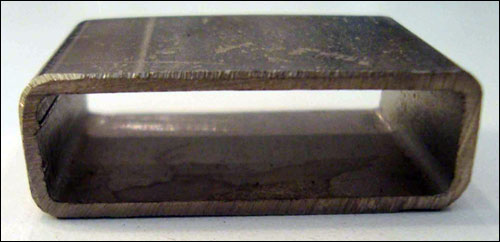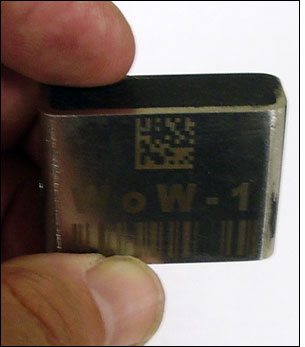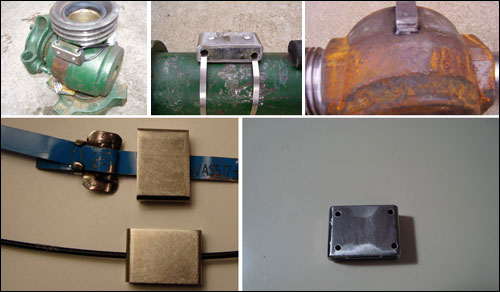It grieves me.
I have been an ultrahigh-frequency (UHF) pundit and UHF tag wizard for more than a decade, only to watch greater numbers of UHF tag myths die and succumb to broader understanding and better training. Fear of UHF has all but died. Every month, RFID Journal crushes one myth after another until the user community is left complacent, but confident and ready to rush toward implementation.
|
|
As EPC Gen 2 UHF RFID emerged, so, too, did a large cloud of mysticism and black art regarding how UHF actually works (or does not work). Rumors that the physics prevented ordinary things to work with UHF tags became the industry buzz—it can’t be located near metal, placed near or in water, read from farther away than 1 meter and so forth. Since 2005, several companies have provided workable UHF EPC Gen 2 solutions, helping to lay all past fears to rest. And RFID Journal regularly publishes articles designed to drive the final nails into the UHF RFID black-art coffin.
It’s time to remystify UHF RFID. Lets put the “black” back into UHF black art. At RFID Journal LIVE! 2010, William Frick & Co.‘s booth showed a tag designed by my firm, Technologies ROI LLC (TROI). The tag’s name, WoW-1 (WoW stands for “worldwide and weldable,” but could also have other meanings), is designed to provide a breakthrough in size and capability. The mystery evoked by this tag is that it is not merely a metal-mount tag, but rather a metal tag. The tag is a rectangular, stainless-steel shell filled with ceramic epoxy. Its surface can be etched, welded, drilled, banded and attached from all of the cube’s six faces—what’s more, it can be attached sideways, upside down, right side up and on end. Finally, although the tag would be presumed to be readable (and writeable) only from its two sides (ceramic faces), it is instead readable and writeable from all six faces, including each of the four metal sides. The read/write distance from the tag’s metal surfaces is roughly two-thirds that of its ceramic face. The tag performs best when attached to metal, and actually improves when cabled or metal-banded. Clearly, backscatter RF oozes from every face, as well as along attachments.
We at TROI prefer to have the physics behind this design kept in the black-art camp, but we welcome physics enthusiasts to submit their candidate explanations for what is better left as pure magic.
Pictured above is the basic WoW-1 stainless-steel shell. This sort of reminds me of a magician about to saw a beautiful woman in half, but who starts by showing the core chamber as empty. In this case, the audience needs to be left with the sense that this truly is a metal tag, and not just a metal-mount tag.
Next comes the secret ingredients, which resemble the woman placed in the box before it is closed. In the case of the WoW-1, the stainless-steel chamber is filled with ceramic epoxy, in order to assure that the entire tag is heat-stable and completely rugged. The inner cavity insert can use any current passive UHF RFID chip (such as those made by Alien Technology, NXP Semiconductors or Impinj) thereby allowing seamless data programming within a mixture of other like EPC Gen 2 tags.
At this point in our presentation, metaphorically speaking, the magician would saw his assistant in half: The WoW-1 would be welded from, drilled through or attached by bands or cables from any of the six faces.
Just as the lady escapes unscathed from the evil saw, so, too, does the WoW-1 function exceptionally, regardless of the method of attachment.
You and I both know that TROI has a physics-based answer for how the WoW-1 actually works, but don’t you agree that the myth and black art, together with the magician example, are more fun to consider?
This is not your ordinary tag. The stainless-steel case provides a weldable, laser-etchable, peen-markable or chemically etchable surface to add 1-D or 2-D symbology or alphanumeric marking. It can be painted or overmolded. You can also mark the ceramic faces. The tag reads from all directions, regardless of the attachment method. The ceramic can come with a slot for strapping, a hold for cable or holes for screw-mounting.
The read distance always depends on the environment, but this tag’s read range is comparable with that of its sister TROI tags, such as the TMT-3 (tiny metal tag-3) and rubber-based tag PC-101-cable.
The WoW-1 comes from a family of tags made with RFID chips contained in a solder-bonded Micro Small Outline Package (MSOP). Tests have shown the WoW-1 tag to remain operational after exposure to temperatures of 400 degrees Fahrenheit (204 degrees Celsius) for 1,000 hours and cycled between -25 degrees and +400 degrees Fahrenheit (-32 degrees and +204 degrees Celsius) for 1,000 hours in 6-hour intervals. The tag can be exposed to temperatures above 600 degrees Fahrenheit (316 degrees Celsius) for brief periods, and is generally chemically inert.
Sam Falsafi and Konrad Konarski, cofounders of the Oil & Gas RFID Solution Group, stated that “the WoW-1 and the associated FRAC tag (special application version of PC-101 cable) are the breakthrough RFID packages the oil and gas industry needs for mechanical integrity to enable asset management at a time in history where certification, validation and security are at an all-time premium.”
Falsafi adds: “During an audit of a rig’s tools that have the Wow1 RFID tag, simply reading the tag not only verifies a tool’s compliance, but also helps locate tools that may have become past-due for services. With the recent major incidents in the oil and gas market, daily, weekly and six-month inspections of most rig equipments are imperative in making sure the tools are safe and serviceable. This is another area where specialized oil and gas RFID tags can essentially prevent and predict operational downtime and enhance existing health, safety, security and environmental procedures.”
Patrick King founded Technologies ROI LLC (TROI) in 2002, prior to also becoming Michelin‘s current leader for global electronics strategies. TROI’s strategic direction is to provide exceptional rugged RFID tags to the oil and gas, construction and related heavy-industry vertical markets.





